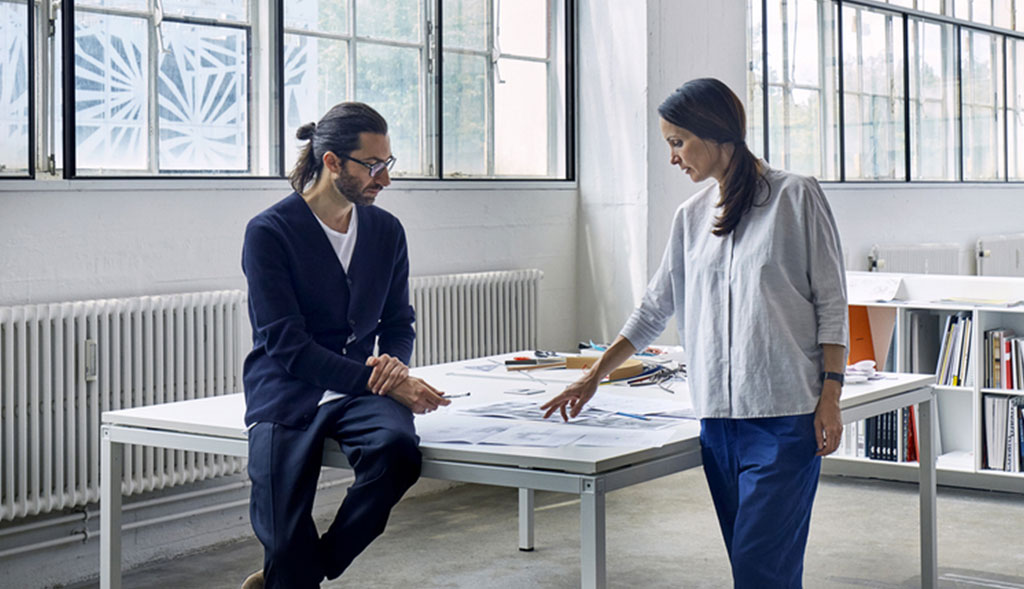Designer Spotlight : GamFratesi
Copenhagen based studio GamFratesi was founded in 2006 by Danish architects Stine Gam and Italian architect Enrico Fratesi. The pair draw on the classic Danish furniture and craft tradition as well as the classic Italian intellectual and conceptual approach.
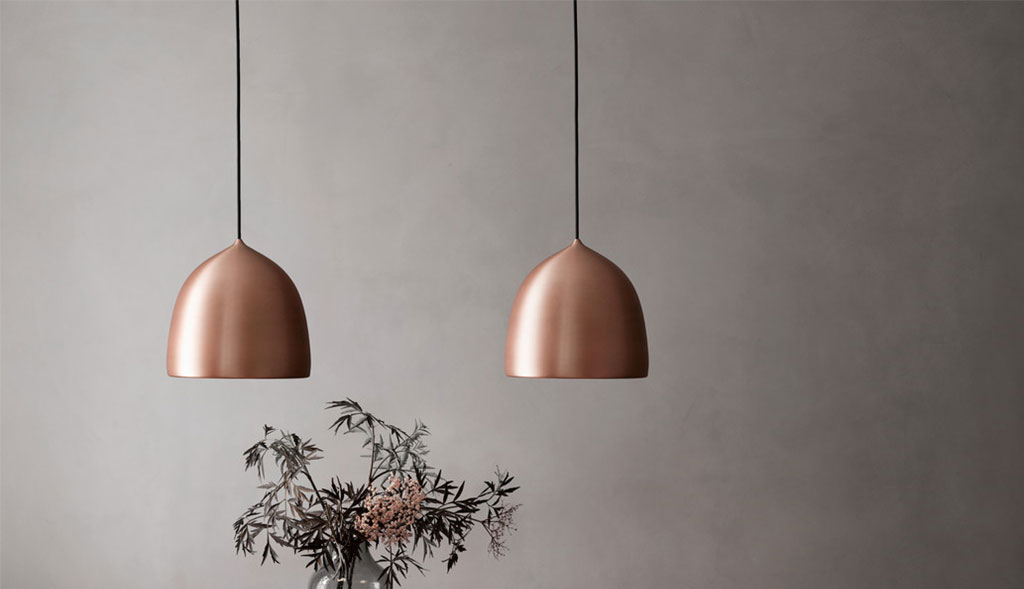
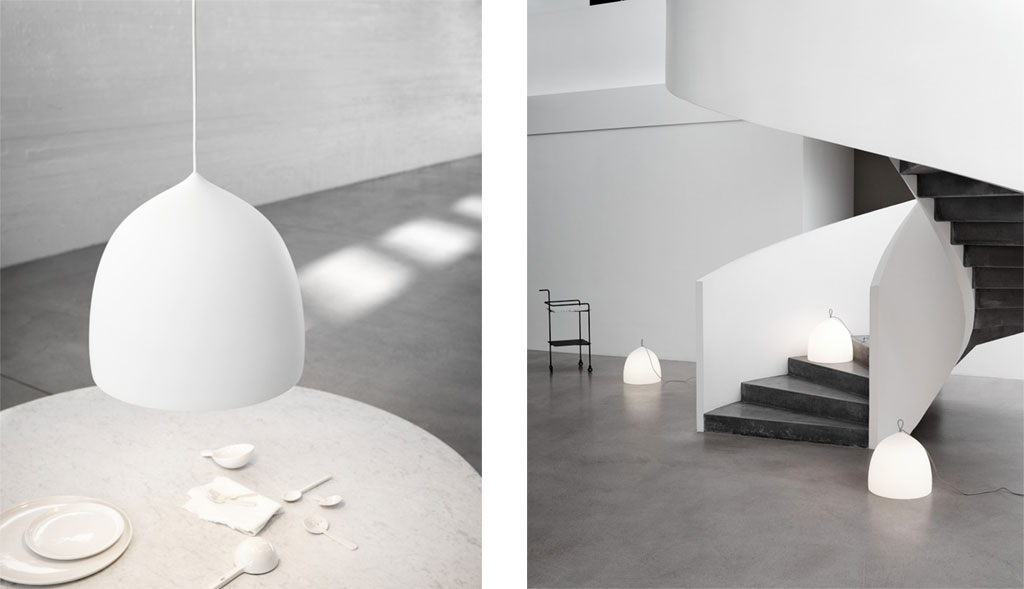
Adopting a signature experimental approach to their chosen materials, Stine and Enrico's cross-cultural partnership reflects tradition while taking inspiration from the contrasts of everyday life to create designs expressing a subtle duality of function and beauty.
The Fritz Hansen Suspence Pendant Lamp & Suspence Nomad Floor Lamp.
GamFratesi's inspiration for the Suspence lamp series (above) has been translating a movement into a physical shape. The shape of the lamp has been created by pulling – an elementary movement involving physical force. This tensile force is visible at the top of the lamp, where you see the little tip.
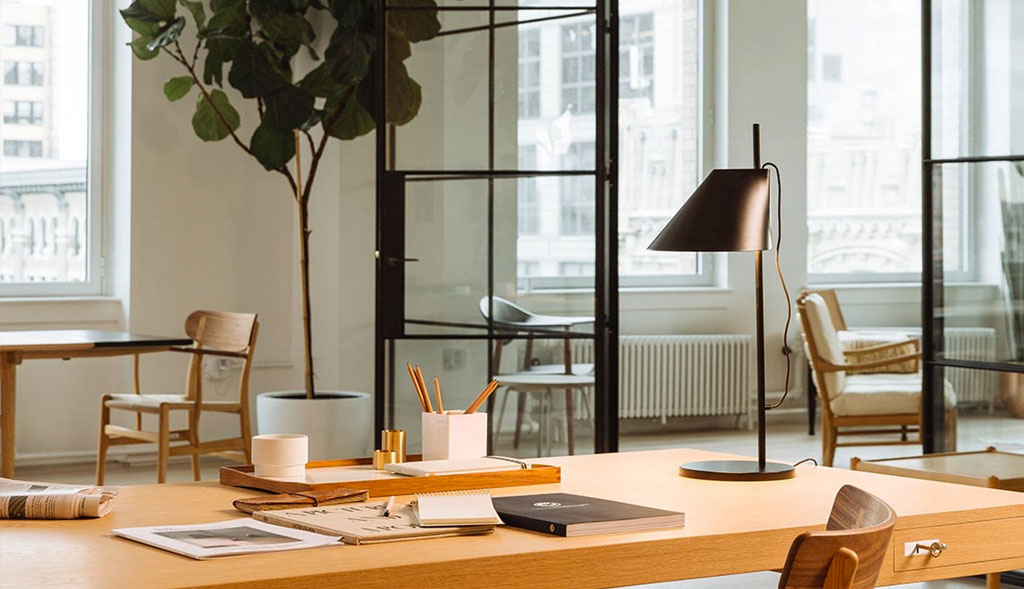
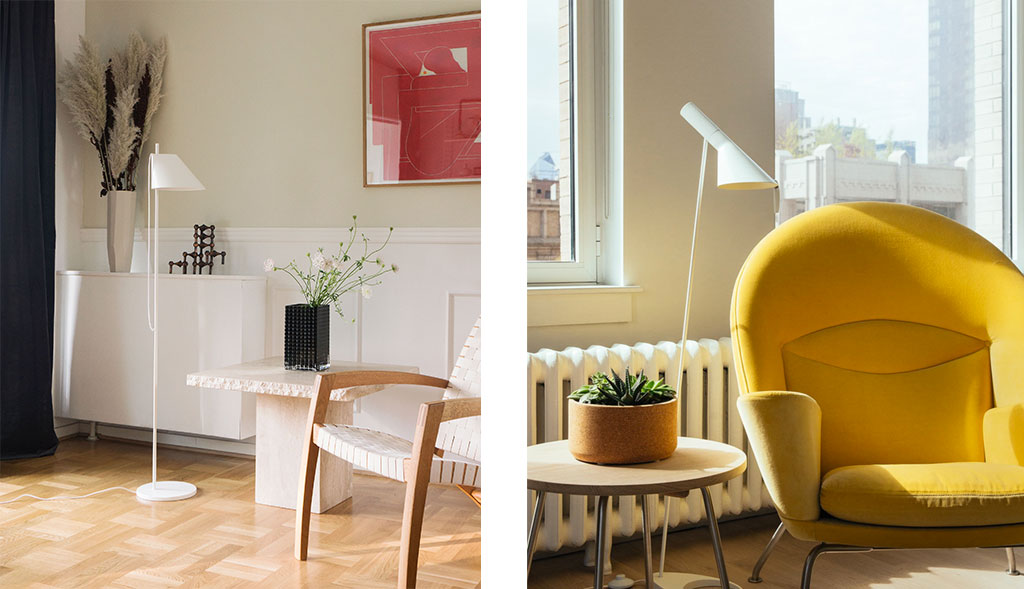
GamFratesi aim to create furniture that illustrates the process and the techniques that created it, and which reflect a persistent exploration of the diverse border zone between harmony and disharmony.
Louis Poulsen Yuh Table and Floor Lamp
Yuh is the phonetic form of ‘you’, the letters represent the sound made by the voice to say “you” - a name chosen for a lamp designed to be personal. It can rotate, raise and lower, illuminating and creating ambience in the desired area without taking up to much space. Yuh is a lamp created around you.
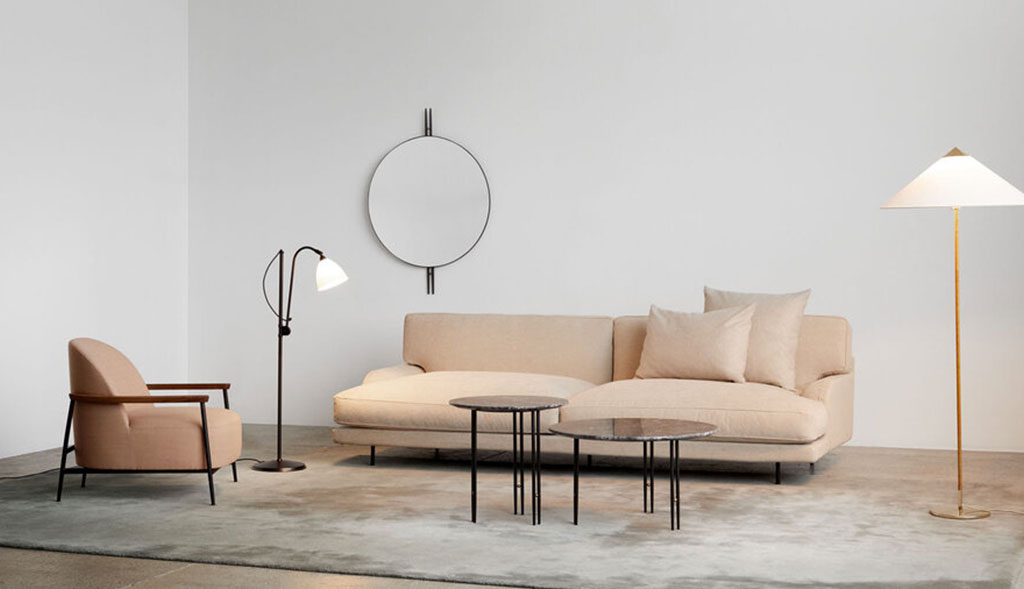
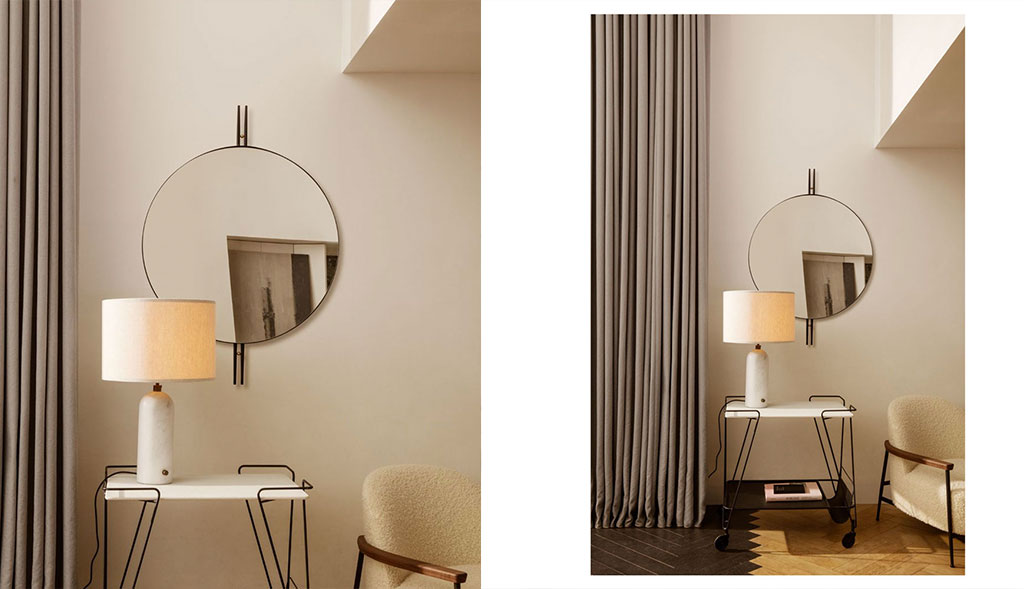
Gubi IOI Mirror
GamFratesi's latest Gubi design draws on geometric Art Deco references with a modern design language that makes it ideal for contemporary audiences and interiors. The ‘sticks and sphere’ motif is reflected in the shape of the letters that form their name, pronounced ‘i-o-i.’
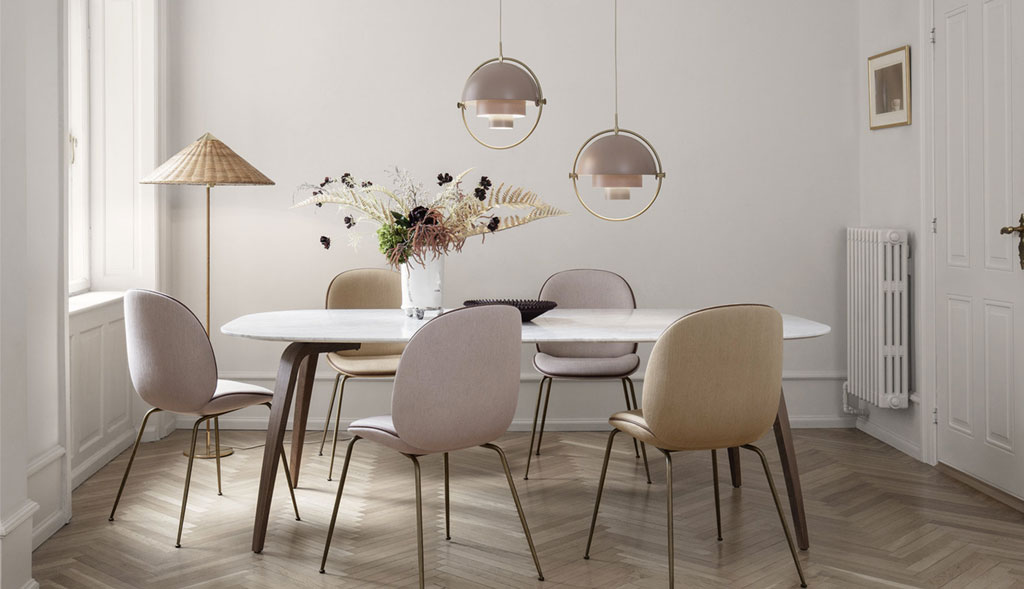
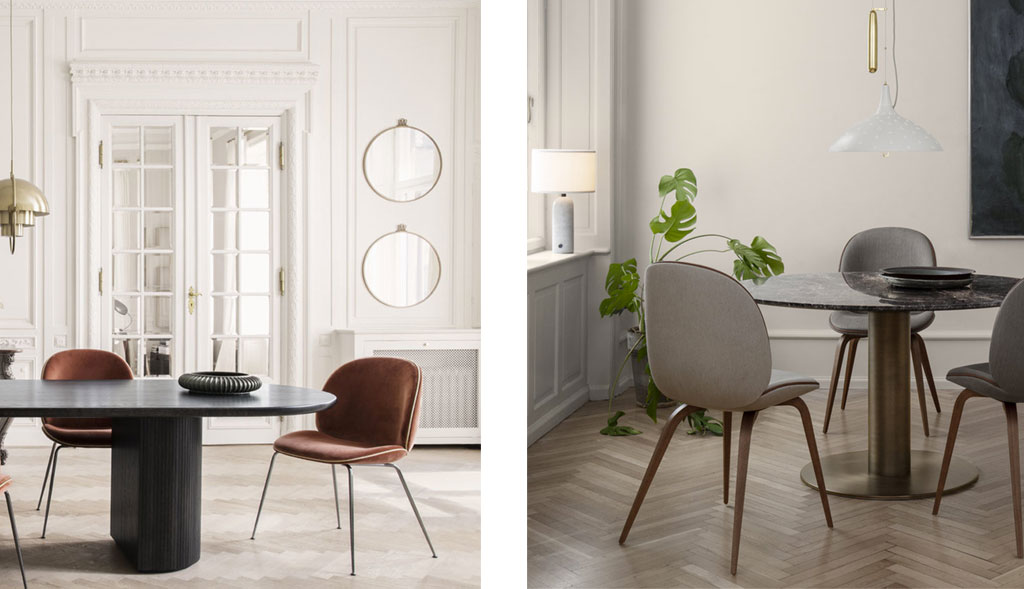
Gubi Beetle Chair
GamFratesi found the inspiration for Beetle Chair in the anatomy and aesthetic of the beetle. They reinterpreted the beetle’s hard and characteristic shell and structure in a chair that, like an actual beetle, has a hard exterior and a soft interior.
The dynamic ability of the insect in space is developed through a four-legged chair on castors. The chair is stackable and flexible suited for informal meetings, allowing mobility around the table and being flexible and spontaneous in the workspace.
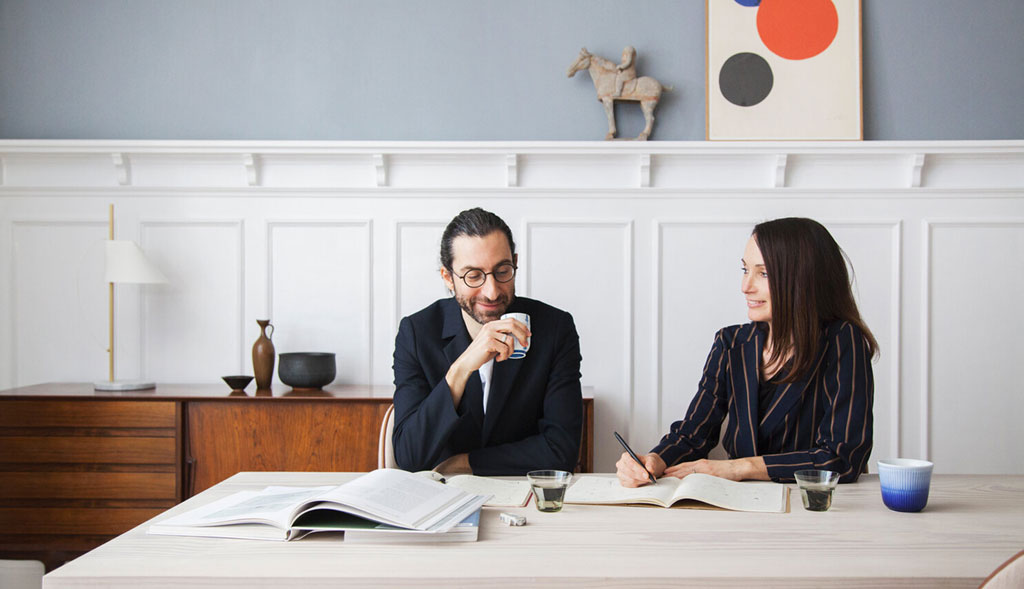
At home with GamFratesi
As more and more workspaces are being specified within the home, Gubi asked Danish Italian design duo GamFratesi to share their insights on working from home and creating a space that inspires and enables their best work:
Q: Please describe your own workspace and explain why it works for you?
A: “In our home, a bit like in the office, we have a three-meter-long solid wood table that we use for various purposes, but often for work. It allows space for our ideas and for us to work freely with drawings and computers. We also love to look at reference books and biographies, so we are surrounded by piles of books.”
Q: Do you have multiple workstations – either formerly or informally – for example sitting desks, standing desks, sofas or lounge chairs?
A: “The large welcoming table is the center of our formal working day – we share it and can leave our notes, sketches and documents spread out, but in the kitchen, we also have a travertine Epic Table, which we work on more informally, and we love the materiality of the stone.”
Q: How does the space you work in at home differ from your studio – or are they quite similar?
A: “The space at home is perhaps more orderly. The office becomes a platform for a messy but very free process, especially before deadlines and during large projects.”
Q: What do you like most about working from home?
A: “The intimate and calm atmosphere – we can really concentrate at home. In fact, it has always something that, as a couple in life and in work, we have maintained and appreciated.”
Q: What is the one non-essential item that is always on your desk – and why?
A: “If it's always on our desk, that it means it's essential. It could be a small object, such as a vase or a stone – that natural element that makes its context into a small landscape.”
Q: Why is it so important to create the right atmosphere for working from home?
A: “It is essential to create a personal space that makes you comfortable and stimulates your spirit to work with pleasure.”
Q: What role does the aesthetic play in creating a good home office atmosphere?
A: “Colors and materials are surely the ingredients to create a pleasant and stimulating space. We prefer natural materials that create a positive relationship with the touch, and calm neutrality for colors so as not to affect our thinking on the project in hand.”
Q: What are your top tips for somebody creating a workspace at home for the first time – or updating an existing space?
A: “Rediscover the pleasure of an honest, simple but sophisticated aesthetic. Start by removing as much as possible and then select things to insert back in very carefully. We are all too often surrounded by unnecessary things that disturb us, so it is important to minimize our surroundings.”
Q: How can people create an ergonomic working environment even in a shared space such as kitchen or dining room?
A: “A good seat can really help create an ergonomic space. You do not need technical office chairs, but sometimes small tricks and quality products that offer flexibility for body movements can really help to find a comfortable position.”
Q: Which are your must-have home office pieces from the GUBI Collection and why?
A: “The Beetle Chair is certainly a chair that offers great comfort but also the latest addition of the Bat Chair with its armrest and welcoming shape is the perfect seat to bring the functionality of an office into the informality of the home.”
original source : Gubi.com
Time for more? Our Working From Home Experience | Utility Content Team | Isolation Stations : Tips For Working From Home | Working From Home Vol 02 | A Utility Design Playlist
-
All StoriesSpotlight on the Eames Shell ChairRead More
Recognised the world over as a true design icon, the Eames Shell Chair collection has a place in the Museum of Modern Art (MoMA) in New York City, with several variations on display for visitors to this day. The Eames...
-
Featured PostsSpotlight on the Artek Stool 60Read More
Despite its seemingly straightforward design, the Artek 60 Stool is the most elemental of furniture pieces; equally suited for use as a seating option, a versatile side table, or even a practical display surface. Born of modernist ideals and Finnish...
